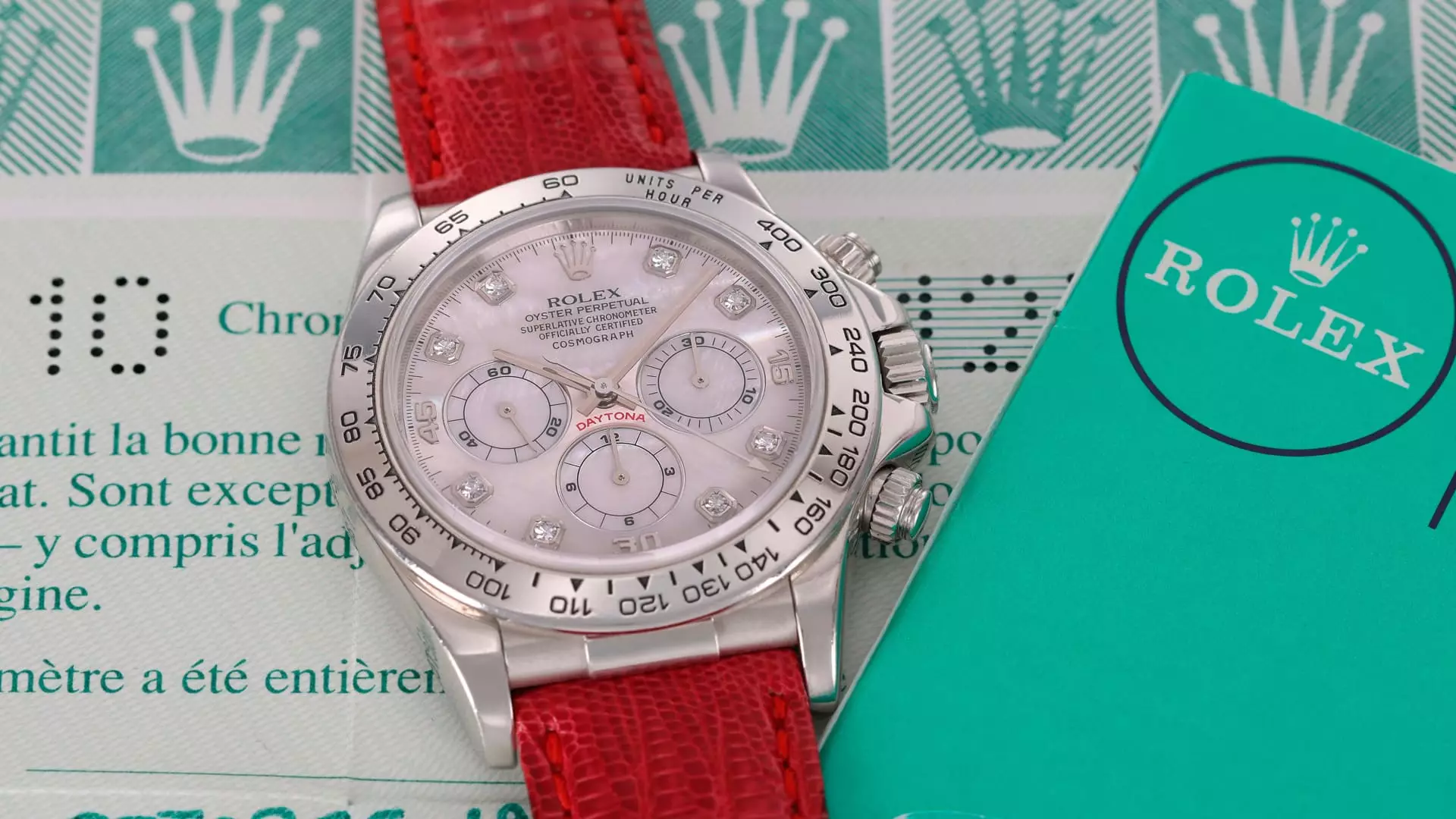The upcoming auction of a unique 1999 platinum Rolex Daytona at Sotheby’s Geneva has elicited a complex web of emotions. Expected to fetch a staggering $1.7 million, this piece not only represents an astounding financial investment but also evokes a debate about the philosophy of luxury, consumerism, and the very nature of value in today’s society. Is this mere extravagance or a legitimate investment opportunity? The boundaries are as murky as the mother-of-pearl dial on this exceptional timepiece.
Custom-made Exclusivity or Commodification?
Unlike standard Rolex models, this Daytona has been custom-made for an individual client—an exceedingly rare occurrence for a brand synonymous with prestige. Senior watch specialist Pedro Reiser pointedly notes, “There are other brands which might be more flexible… but not in the space of Rolex pieces.” This raises the pivotal question: Does the custom aspect truly enhance the value, or is it merely a gimmick perpetrated by luxury brands to create a façade of exclusivity? In an age when customizations have become emblematic of consumer culture, Rolex’s attempt to provide a tailored experience feels both groundbreaking and an insidious play to manipulate prestige.
With only four known examples of this platinum masterpiece, the watch carries a mystique that can be likened to an art piece. But if we analyze that idea critically, one must ponder whether this is an uplifting celebration of artistry or a disheartening reminder of how commodified our notions of beauty and uniqueness have become. The luxury market often operates on the principle of rarity, and this watch fits snugly into that construct, almost like a treasure locked away in a glass box, viewable but out of reach for most.
The Rolex Legacy: From Craft to Capital
Rolex has transcended its original identity as a respected watchmaker to become a global luxury icon. Under the leadership of Patrick Heiniger, from 1992 to 2008, Rolex underwent an evolution that ultimately influenced its transformation into a symbol of wealth and status. This is a juxtaposition not lost on discerning observers: What price authenticity in an age when symbols of success are manufactured through marketing rather than craftsmanship?
It isn’t merely the watch itself that has sparked excitement; the narrative surrounding it has been captured in a whirlwind of rumors and legends. While some enthusiasts speculate that Heiniger himself may have owned a similar model, Reiser’s insistence that this remains unconfirmed puts a lid on the sensationalism. The allure of stories behind high-value items could be seen as a double-edged sword: it romanticizes the piece while simultaneously detracting from its intrinsic worth.
Investor Appeal and Youthful Sentiment
In a world increasingly drawn to rare collectibles as financial investments, the Rolex Daytona serves as a telltale sign of shifting perspectives — especially among younger consumers. Reflecting recent figures, luxury watches have seen a staggering 125% increase in value in the last decade, made even more relevant by a new wave of millennial and Gen Z collectors entering the market. This signals not just a burgeoning interest in high-value items but also perhaps an awakening to what luxury can signify in modern times.
Yet one must ask: Are these young investors genuinely interested in the craftsmanship and heritage these watches represent, or simply tempted by the allure of potential profit? The slim line between appreciation and speculation casts a shadow over the authenticity of their interest.
The cooling down of total value in the market, despite a robust five-year growth rate, suggests the fluctuation synonymous with luxury investments. The dynamic has transformed collecting from a passionate hobby to a performance-driven pursuit fitting neatly into the financial market. Is the age-old charm of collecting eroding, leaving in its place a bald and cutthroat competition for monetary gain?
These conflicting sentiments surrounding luxury, investment, and authenticity reveal a critical paradox embedded in today’s material-driven society. The price tag on the 1999 platinum Rolex Daytona could be interpreted not just as a number, but as a mirror reflecting deeper societal values: our quest for status, the relentless pursuit of worth, and the ultimate question of what makes an object truly valuable.

